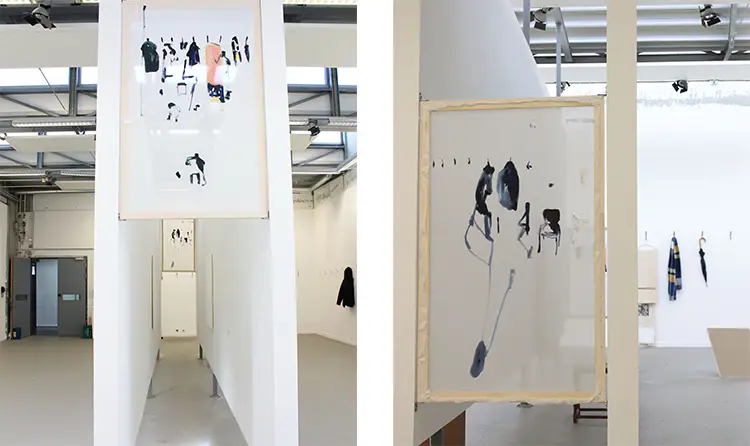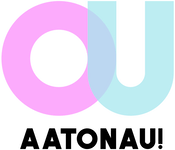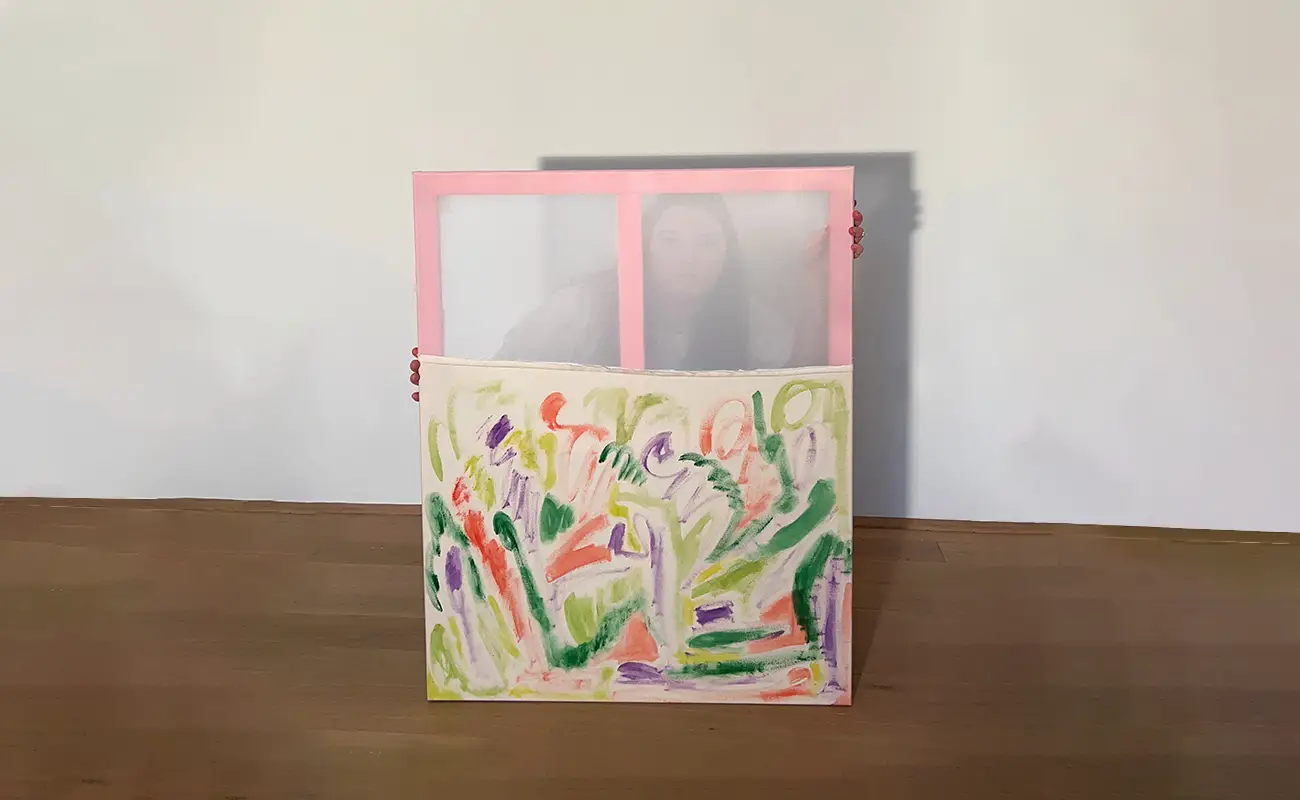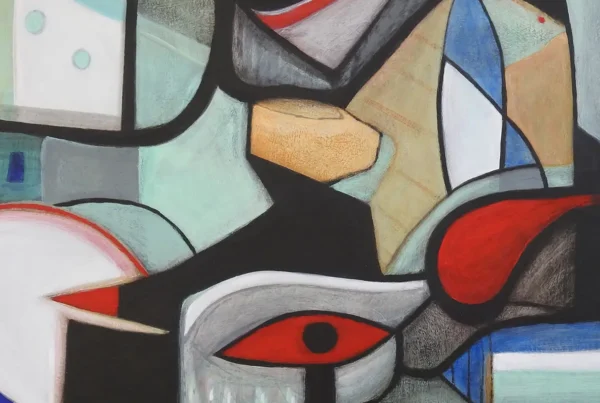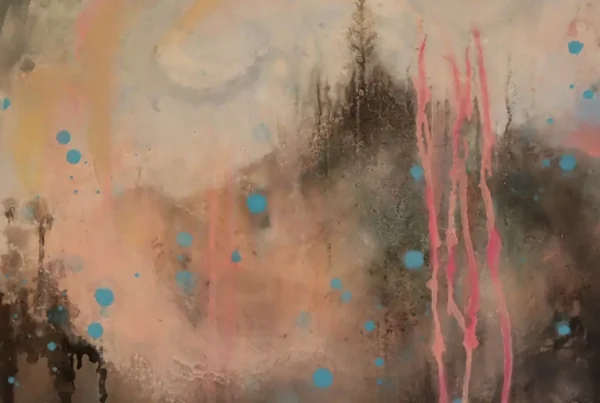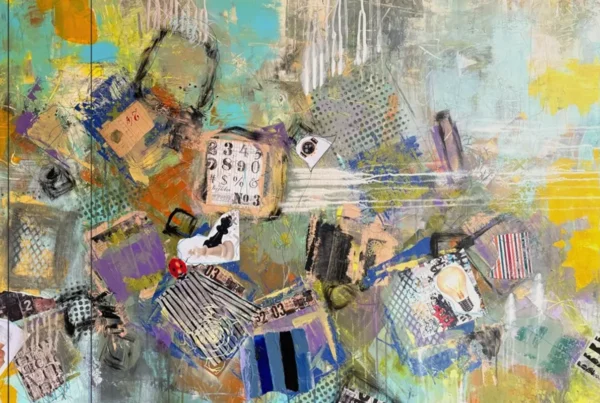“Painting itself serves as self-regulation—through it, I awaken experiences and memories, and in doing so, I discover patterns and new associations.”
The Visual Imprint of Experience
Raised in the quiet town of Rheinberg in North Rhine-Westphalia, Germany, Isabel Schubert’s formative years were rich with exposure to visual culture and artistic influence. Her early life unfolded amid the hum of an optician’s shop founded by her grandparents—a place where the nuances of sight, form, and function subtly informed her sensitivity to vision and perception. Her mother, who had studied art history, and her step-grandfather, the painter Hans Hohnen, introduced her to artistic disciplines, nurturing both curiosity and confidence. From childhood, Schubert was guided into a world where painting and drawing were more than hobbies—they were extensions of seeing and understanding the world.
This early artistic foundation solidified through her education and mentorships. With encouragement from artist Jenny Schäfer and support from school educators, she was empowered to pursue art rigorously. Following high school, she attended an art school in Neukirchen-Vluyn, where a scholarship allowed her to begin working with oil on large canvases. Soon after, she joined the Münster School of Design, focusing on illustration while developing a signature drawing style and learning the structure of commissioned art. Despite this progress, Schubert found herself yearning for autonomy and studio work, prompting her application to the Münster Art Academy’s fine arts program to study there besides. Her path was temporarily redirected by a period of severe mental illness, including a psychotic episode during a semester abroad in South America, which required hospitalization and ultimately led her to pause her academic pursuits. Since then, she has continued her practice creating in a home studio, while living in a therapeutic community, and embracing her evolving perspective.
Schubert’s art has never existed in a vacuum. Whether in Chile, Argentina, or Germany, her journey has been marked by a steady fusion of academic pursuit, personal adversity, and unwavering introspection. Her lived experiences have become the marrow of her work, which now explores inner landscapes just as profoundly as the external ones she once traversed. Her story underscores the inseparability of art and life, with both bleeding onto the same canvas.
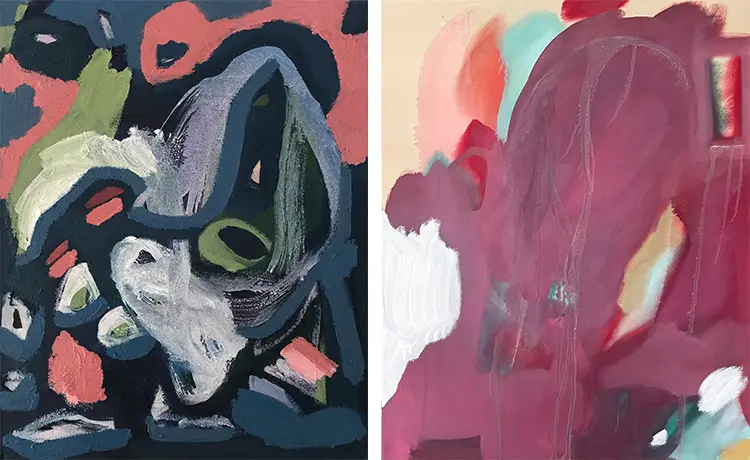
Isabel Schubert: Material Encounters and the Poetics of Process
Schubert’s artistic language resists easy classification, balancing abstraction, expressionism, and a bold inclination toward experimental forms. Her work traverses the overlapping fields of painting, textile composition, and object-based art, with an ongoing investigation into how materials themselves dictate the language of creation. Transparency, surface tension, and tactility are constant presences in her pieces, serving both as metaphors and material realities. Her compositions frequently blur the line between artwork and artifact, positioning the viewer to question the parameters of painting as a discipline.
A significant turning point occurred in 2019 following her diagnosis with paranoid schizophrenia. Prior to that, her projects explored outward themes like perception and psychology, culminating in a zine focused on human perception and a published collection titled Collection of Shapes, Colors & Words, which combined visual and written impressions of her time in South America. After her diagnosis, the focus shifted inward. Her art became an intuitive response mechanism, allowing subconscious thoughts to manifest physically. Through this, she began a process of inner excavation, using color, line, and structure to unlock emotions, memories, and psychological insights. Sketches from her psychotic episode were later donated to the Prinzhorn Collection in Heidelberg—a profound gesture that placed personal vulnerability into the public archive of outsider art.
Titles such as Opacity/Transparency, Wipe, and Visual Interest are not mere descriptors but conceptual anchors. They often emerge from her own poetry, creating a synergy between word and image. The integration of fabric, seams, and unconventional supports points to her sustained commitment to both craft and concept. Each stitched seam and layered pigment engages the viewer in a dialogue about permanence, transformation, and the visibility of process. Her canvases invite scrutiny not just of what is seen, but how seeing is shaped.
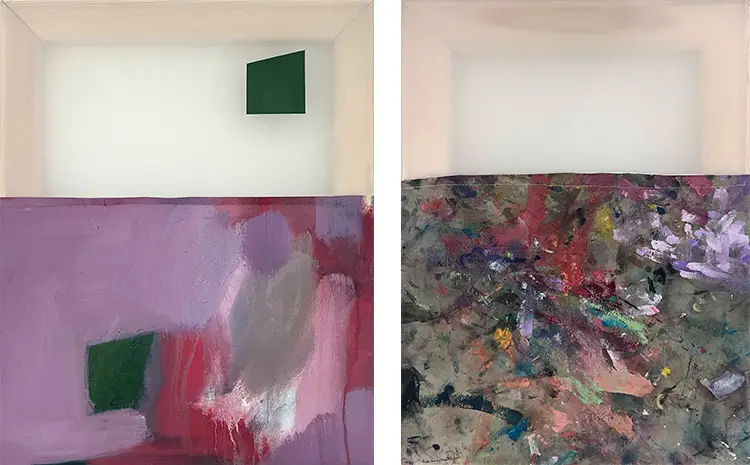
Tracing Memory Through Transparency
Among Schubert’s body of work, the pieces Tracing I and Tracing II hold unique significance, representing both an aesthetic breakthrough and a conceptual deepening. Exhibited in 2018 during the დაyolk show at the Münster Art Academy, these works emerged within a performative, participatory installation. The exhibition space was transformed into an immersive walk-in wardrobe, where visitors were encouraged to deposit their coats, becoming part of a living, shifting installation. Schubert placed two transparent canvases between partition walls, standing between them and engaging in a live painting performance in which she traced the silhouettes of people, garments, and surrounding objects onto the transparent fabric using water-soluble oil paints.
This was her inaugural exploration with transparent fabrics, a decision that would profoundly influence her subsequent artistic trajectory. These works not only pushed the boundaries of material exploration but also made the act of painting itself visible—turning creation into performance and the viewer into a participant. The transparency of the fabric served both as a literal and symbolic device, enabling Schubert to “trace” not just figures but the act of perception itself. The performative aspect emphasized the interaction between the body and space, memory and presence, visibility and void.
What emerged from this project was a commitment to transparency as a fundamental concept—one that informed both medium and message. The layering of opaque and translucent materials, sewn together with visible seams, added physical depth while exposing the mechanisms behind the work. The act of tracing became more than visual documentation; it became a metaphor for remembering, for recording fleeting moments, and for engaging in a silent dialogue with presence and absence. These works established a vocabulary that Schubert would continue to refine and expand, always seeking new ways to make the unseen seen.
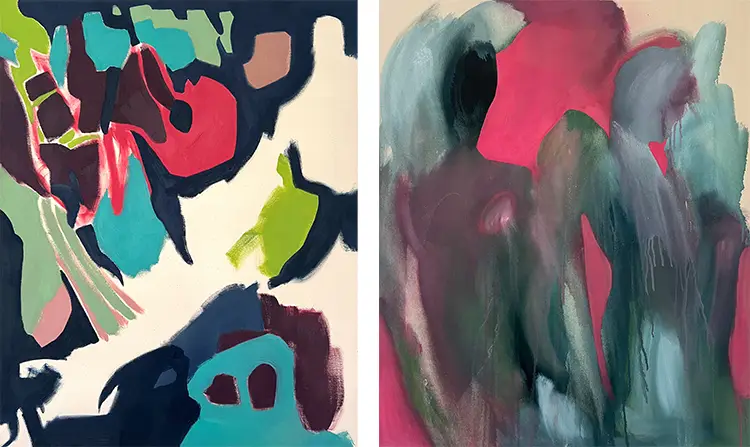
Isabel Schubert: Expanding the Language of Material and Space
Schubert’s studio practice is rooted in the necessity for space, solitude, and sound. A working environment where she can spread materials freely and immerse herself in process is critical. Whether in the expansive university studios of her student days or the modest home setup during her recovery, she adapts her surroundings to serve her need for introspection and tactile engagement. Music becomes both companion and catalyst, shifting in volume depending on her mental focus. Her practice thrives on these ambient conditions, creating an atmosphere in which experimentation and self-discovery flourish.
Her preference for water-soluble oil paints grew out of both practical and ethical considerations—avoiding solvents for health and environmental reasons. Over time, she narrowed her palette to primary colors, along with white and burnt umber, allowing her to mix every hue by hand. This restraint gives her full control over color development, contributing to the intentionality and authenticity of her work. Schubert constructs her own canvases, priming them with transparent binders to preserve the fabric’s organic texture. Materials like tracing paper, glass, water, and transparent fabrics recur throughout her practice, introducing a dichotomy between clarity and opacity that she continually manipulates and redefines.
Looking forward, Schubert envisions larger-scale textile installations that transform spaces and engage audiences on a physical level. These immersive environments would allow viewers to navigate through suspended and draped works, experiencing shifts in transparency and texture from multiple vantage points. She has begun exploring materials like epoxy resin and silk, and continues to combine painting with cyanotype, analog photography, writing, and drawing. The artist book remains a cherished format for her, offering a portable and intimate extension of her visual language. Through all of this, her commitment to fusing traditional techniques with experimental structures underscores a practice that is both grounded and fearless in its pursuit of personal and artistic evolution.
